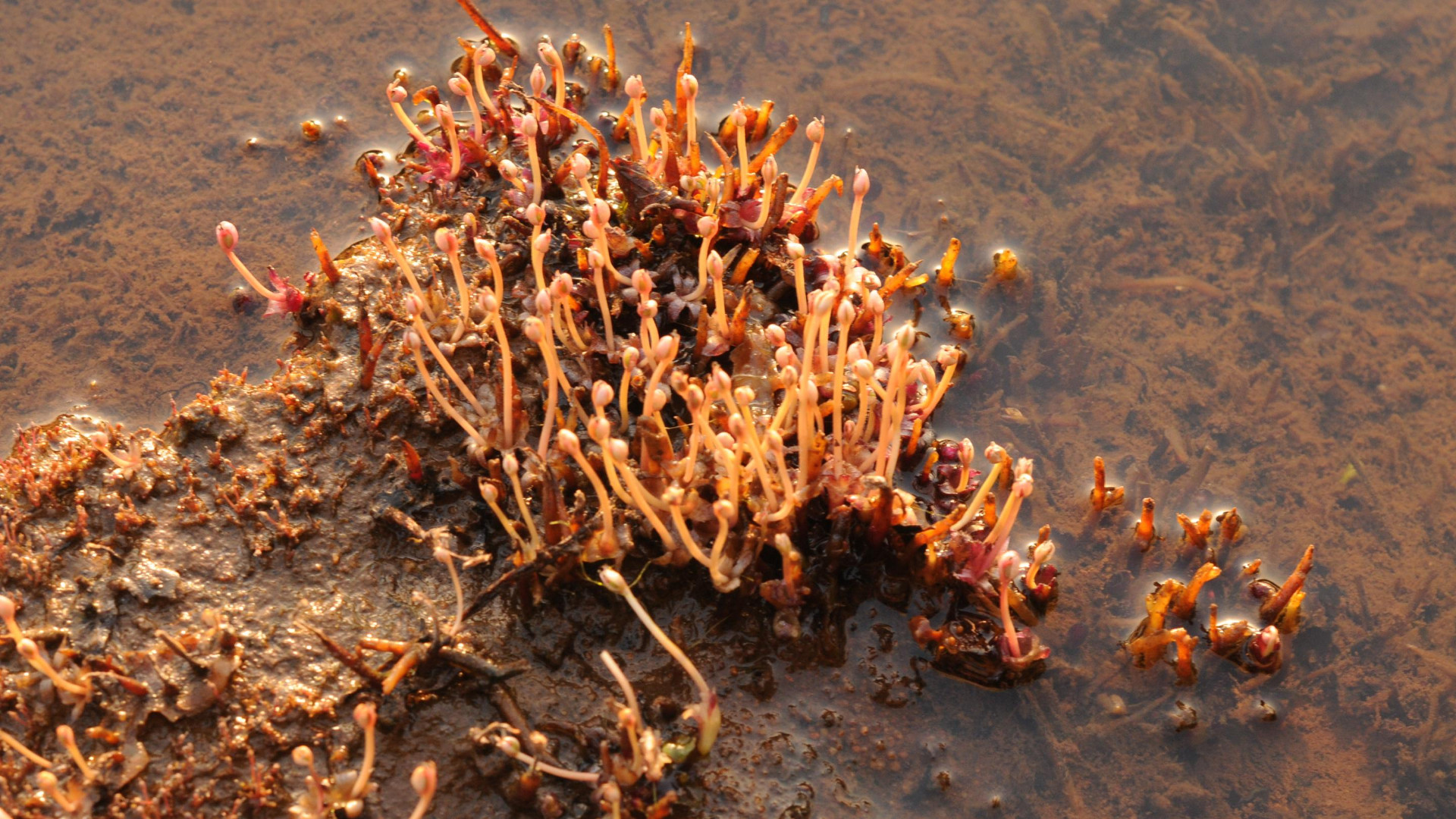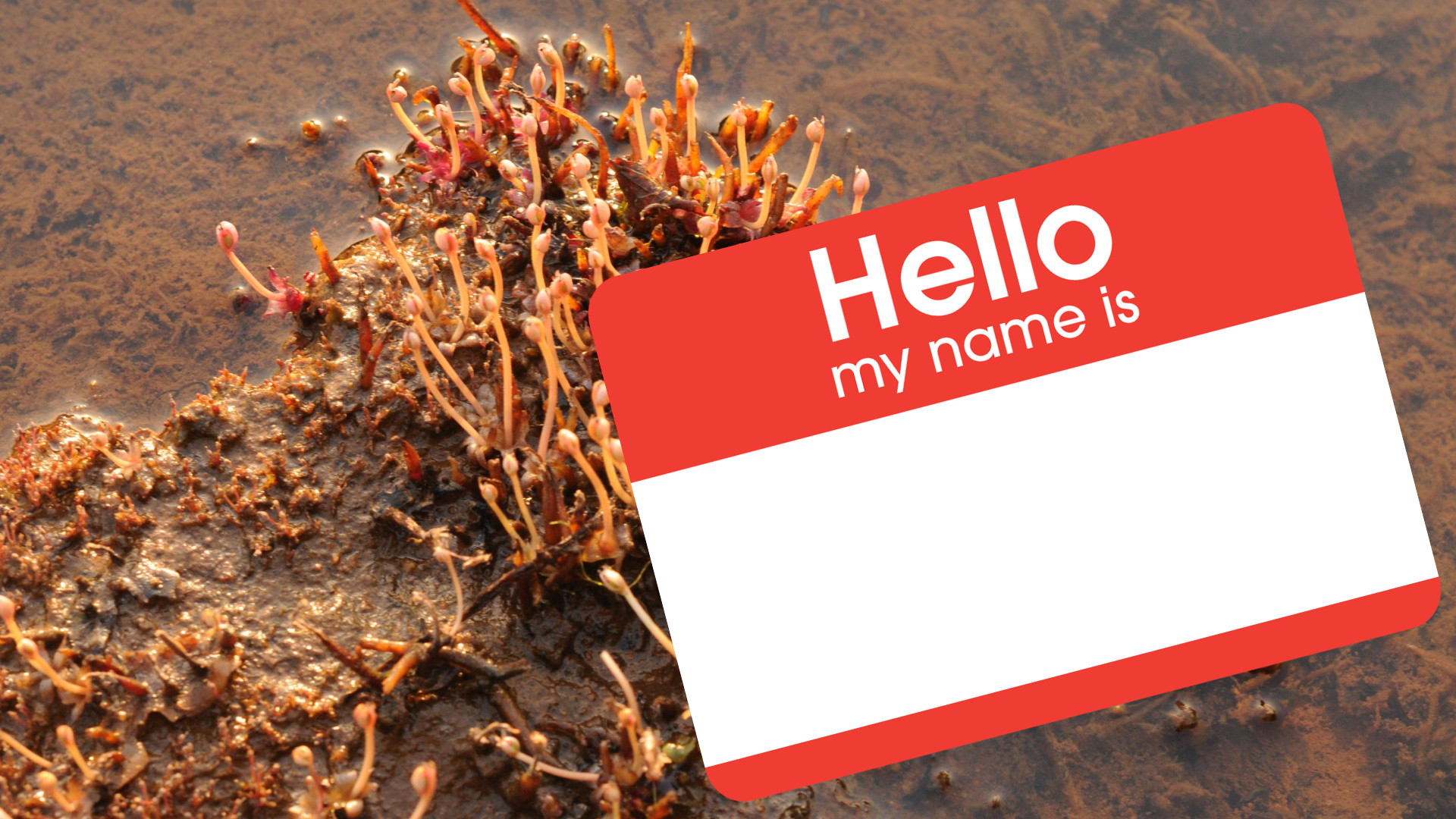Martin Cheek has an unusual and important job.
As a senior researcher at Royal Botanical Gardens Kew, Cheek leads a team of people who work around the clock to identify and name new plant species from Africa and Madagascar. Over the past several years they’ve described hundreds of new species and helped to conserve thousands more.
 It’s a task with a tight timeline. As Cheek says, you can’t save a species from extinction if it doesn’t have a name.
It’s a task with a tight timeline. As Cheek says, you can’t save a species from extinction if it doesn’t have a name.
Sometimes those names come too late.
A few years ago, Cheek and botanist Matthew Jebb from the National Botanic Garden in Dublin announced the discovery of group of endangered carnivorous plants from the Philippines. One of the newly identified species, it turned out, had probably already gone extinct due to destruction of its habitat by open-cast nickel mines. The paper describing the species dubbed it Nepenthes extincta — named both for its likely extinction and to call attention to the threats facing similarly unnamed species.
Earlier this year Cheek and his colleagues described another new plant from Cameroon, one that had been partially described by scientists nearly 70 years earlier but never named. Cheek’s paper finally completed that process, calling it Vepris bali and warning that it was probably also extinct, again due to the destruction of its only known habitat.
It may be too late for those two plants, but could another species avoid their fate? A new paper by Cheek and Aiah Lebbie, head of the biology department at Njala University, describes a critically endangered new species — the only known member of its entire genus. It’s the first new plant genus to be described in Africa in 30 years. If not protected, the researchers warn, it could be wiped out in as little as two years.
The have named the species Lebbiea grandiflora in the hopes that identifying it will help to stave off its extinction.

Lebbiea grows in just two sites, the fast-moving currents beneath Sewa Rapids in Sierra Leone (described in the paper) and the Koukoutamba falls in Guinea (discovered after the paper was submitted). An annual herb with unusual pillar-like structures, the plant grows on bare rocks and depends upon clear, aerated water. It thrives during the wet season, when the rivers and waterfalls are at their fastest. When conditions dry out, the plants release their seeds and die. As the seasons change, the cycle begins again.
Those necessary conditions, the researchers warn, could soon dry out permanently. For one thing, gold and diamond mining near the site in Sierra Leone have already started to choke the rapids with sediment, slowing and dirtying the waters. If the waters don’t move fast enough, the plants will die.
That’s bad enough, but now both sites are also earmarked for construction of new hydroelectric dams supported by the World Bank.
Cheek says dams in other parts of Africa may have killed off several similar plant species. He recently led a workshop that identified several critically endangered and possibly extinct species in Guinea. “They were known from single sites, subsequently blessed with hydro dams, and recent visits to re-find the species during the best season failed to locate any plants surviving at these sites,” he says.
That could happen again if the new dams are built. The water flows at each site would change permanently and the entire plant genus could be damned to extinction.
That hasn’t happened many times before, Cheek points out. “Twenty year ago we Brits let Nesiota elliptica, the St. Helena olive, go extinct. The last few plants succumbed to some bugs. There were no seeds in a seedbank and no backup plants.”
Kew plans to collect Lebbiea specimens and seeds as a stopgap in case this plant goes extinct in the wild.
Ironically, the discovery of Lebbiea grandiflora actually came about as the result of one of the dams that could destroy it. An Environmental Impact Assessment conducted for the proposed dam in Sierra Leone revealed the existence of several new plant species, including Lebbiea.
That’s more common than you might think. According to Cheek and Lebbie’s paper, the majority of recent plant discoveries in tropical Africa stem from EIA studies for mining and infrastructure projects.
“That EIA studies make such a major contribution to current species discovery points to the scarcity of resources from other sponsors to support botanical inventory at a time when species are probably being lost before they are discovered,” they write in their paper.
Lebbiea may have been revealed by an EIA study, but in general the studies do not guarantee conservation actions. “A lot of EIAs in Africa are paper exercises, sadly,” Cheek says. “I only went to Koukoutamba and found Lebbiea there because I distrusted the EIA that was supposedly done.”
Africa is not alone in this situation. A recent essay by conservation expert Bill Laurance criticized EIAs, which are frequently funded by infrastructure developers around the world, as “increasingly not worth the paper they’re printed on.” He accused the studies of “giving green lights to developments that should never see the light of day — projects that are destroying irreplaceable habitat or wiping out the last representatives of endangered species.”
Speaking of those last representatives, what’s the likelihood that Lebbiea grandiflora will survive? It’s probably too early to tell. No decisions have been made about protecting the plant in the wild. Meanwhile the fact that the two sites are 100 miles apart could mean that other populations exist between them. As to the broader plant family, coauthor Lebbie has conducted extensive surveys in Sierra Leone and found additional new-to-science plants which could even be members of the same genus, although formal identification is still pending.
Cheek acknowledges that if either of those situations ends up being true then Lebbiea grandiflora may not be so rare after all — but time is short to find out. For now he hopes the simple act of naming the plant and the genus could be the thing that spurs future discovery and conservation before this plant, too, is lost.


